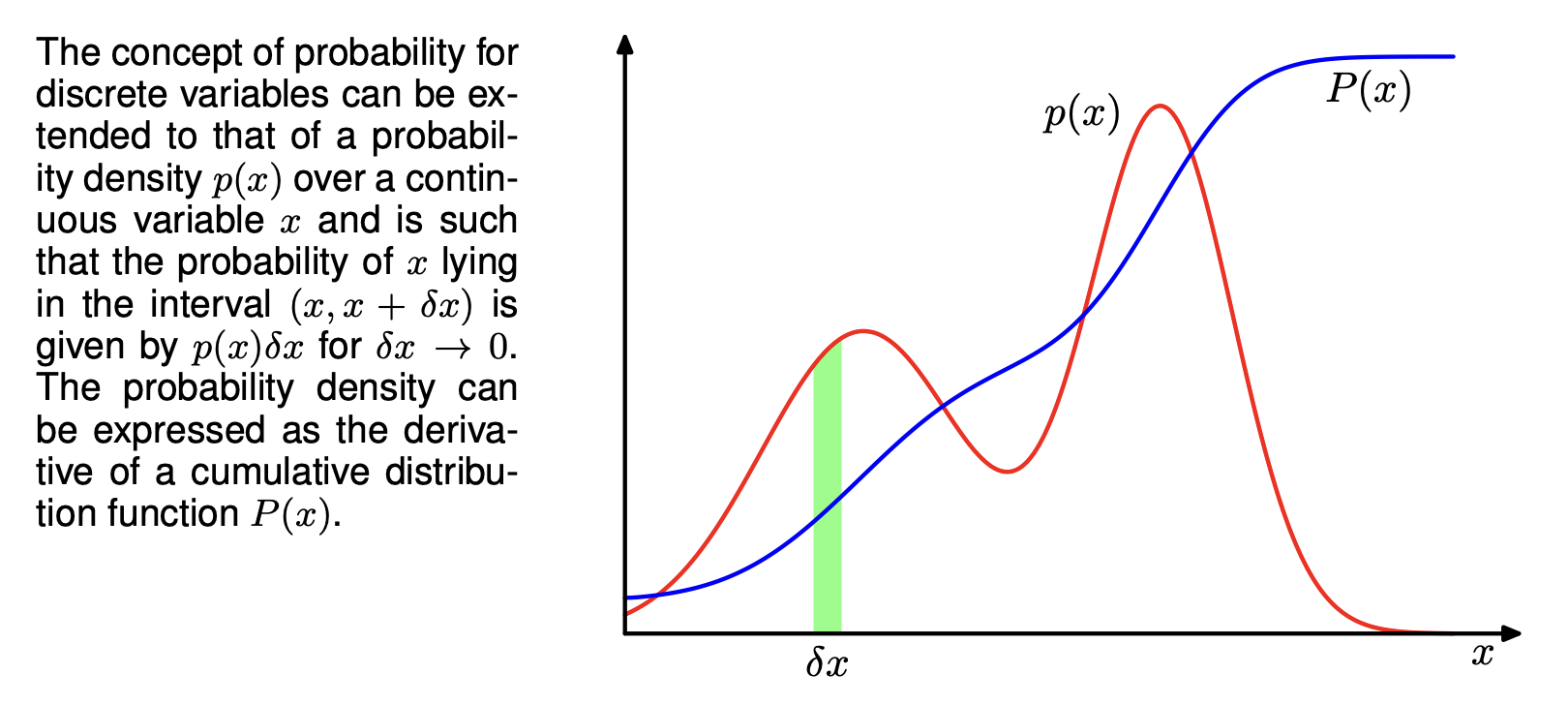Probability density functions allow us to quantify probabilities with respect to continuous variables.
We define the probability density over a continuous variable to be such that the probability of falling in the interval is given by for .

The probability that will lie in an interval is given by
Probabilities are non-negative, and must lie somewhere on the real axis, so the must fulfill these conditions:
The Sum and Product Rules of Probability and Bayes’ Theorem also apply to probability densities; we just use , or for Multivariate Probability Density, instead of for discrete variables. The one difference is that we use continuous integrals instead of summations:
The above is used in the denominator of Bayes’ theorem as well!